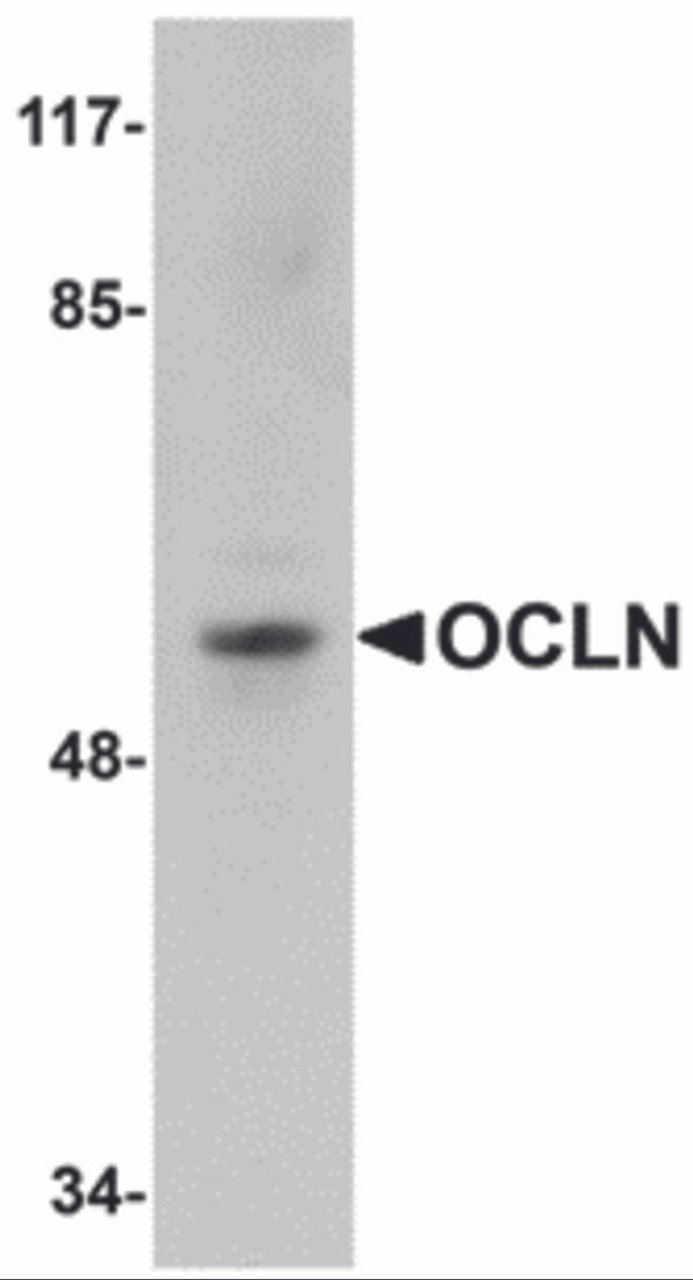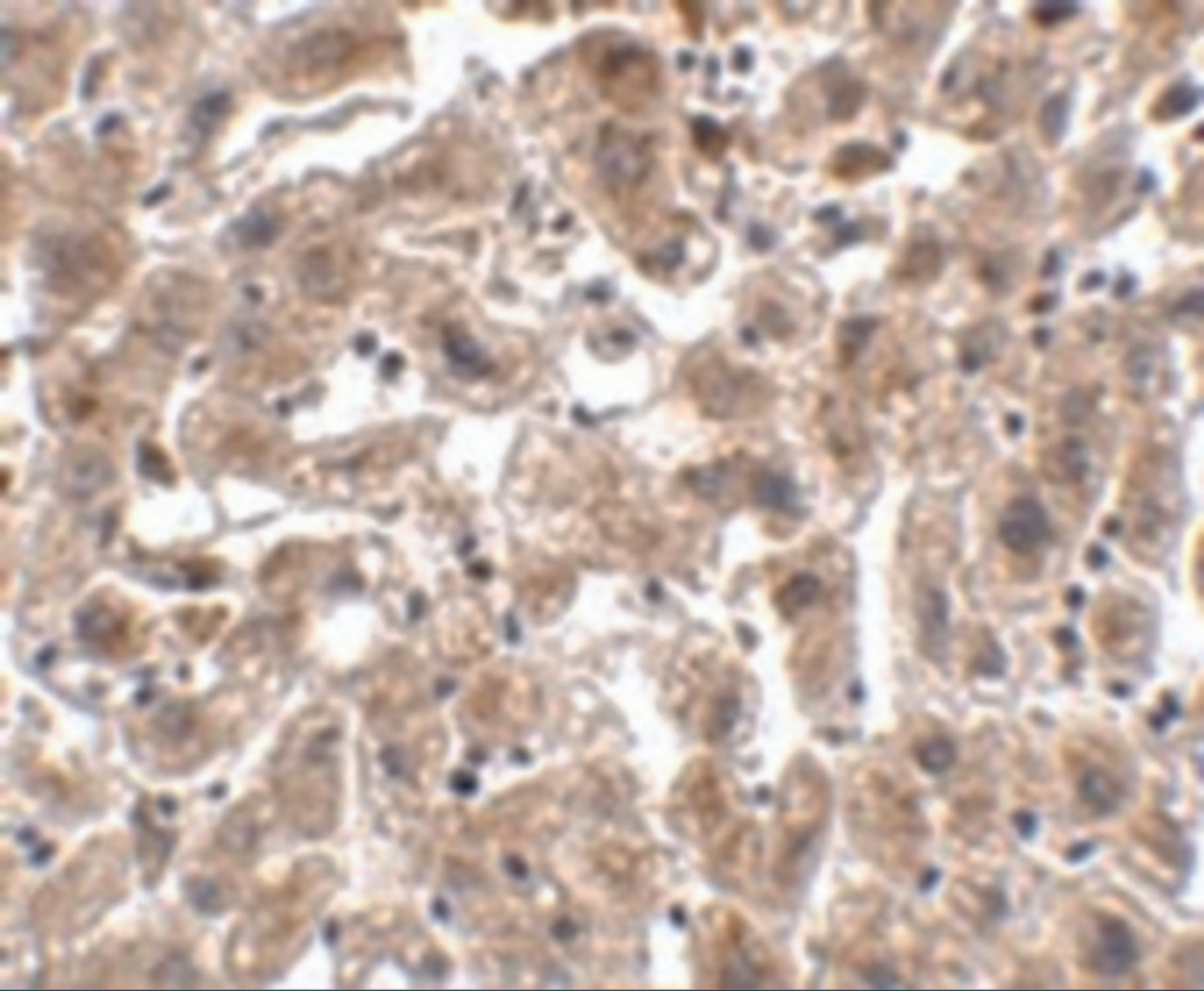Product Description
OCLN Antibody | 5191 | ProSci
Host: Rabbit
Reactivity: Human, Mouse, Rat
Homology: N/A
Immunogen: OCLN antibody was raised against a 15 amino acid synthetic peptide from near the carboxy terminus of human OCLN.
The immunogen is located within the last 50 amino acids of OCLN.
Research Area: Signal Transduction
Tested Application: E, WB, IHC-P, IF
Application: OCLN antibody can be used for detection of OCLN by Western blot at 1 μg/mL. Antibody can also be used for immunohistochemistry starting at 2.5 μg/mL. For immunofluorescence start at 20 μg/mL.
Antibody validated: Western Blot in human samples; Immunohistochemistry in human and mouse samples and Immunofluorescence in human and mouse samples. All other applications and species not yet tested.
Specificiy: At least three isoforms of OCLN are known to exist.
Positive Control 1: Cat. No. 1304 - Human Liver Tissue Lysate
Positive Control 2: Cat. No. 10-201 - Human Liver Tissue Slide
Positive Control 3: N/A
Positive Control 4: N/A
Positive Control 5: N/A
Positive Control 6: N/A
Molecular Weight: Predicted: 57 kDa
Observed: 57 kDa
Validation: N/A
Isoform: N/A
Purification: OCLN Antibody is affinity chromatography purified via peptide column.
Clonality: Polyclonal
Clone: N/A
Isotype: IgG
Conjugate: Unconjugated
Physical State: Liquid
Buffer: OCLN Antibody is supplied in PBS containing 0.02% sodium azide.
Concentration: 1 mg/mL
Storage Condition: OCLN antibody can be stored at 4˚C for three months and -20˚C, stable for up to one year. As with all antibodies care should be taken to avoid repeated freeze thaw cycles. Antibodies should not be exposed to prolonged high temperatures.
Alternate Name: OCLN Antibody: BLCPMG, Occludin
User Note: Optimal dilutions for each application to be determined by the researcher.
BACKGROUND: OCLN Antibody: Tight junctions act as a semi-permeable barrier to the transport of ions, solutes, and water and are considered to function as a fence that divides apical and basolateral domains of plasma membranes. Tight junctions coordinate a variety of signaling and trafficking molecules regulating cell differentiation, proliferation, and polarity and contain a number of junctional proteins including Occludin, Claudins, junctional adhesion molecules (JAMs) , as well as multiple scaffold proteins. Occludin, the first identified component of tight junction strands, is thought function as a signal transmitter in multiple signaling pathways and can associate with multiple kinases and phosphatases such as PI3-kinase and protein phosphatases 1 and 2A. At least two isoforms of OCLN are known to exist.
 Euro
Euro
 USD
USD
 British Pound
British Pound
 NULL
NULL












